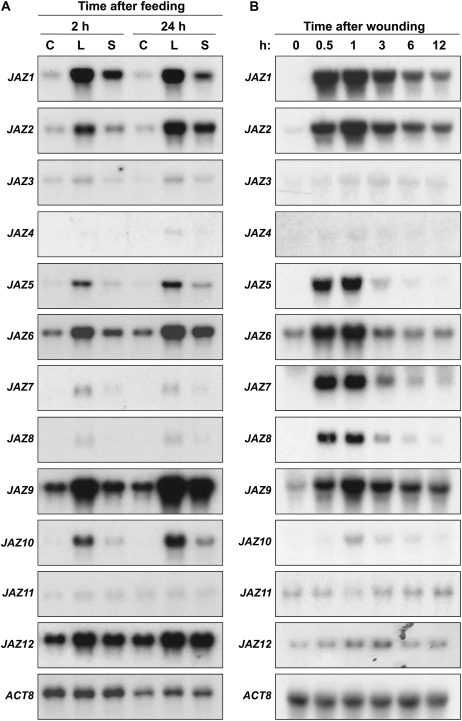Figure 1.
Expression of JAZ genes in response to herbivore feeding and mechanical wounding. A, Five-week-old wild-type plants were challenged with S. exigua larvae. At the indicated times (h) after feeding, damaged local (L) leaves and undamaged systemic (S) leaves were harvested for RNA extraction. A separate set of unchallenged plants was used as a control (C). Five micrograms of total RNA was loaded in each lane and blots were hybridized with the indicated cDNA probes. ACTIN8 (ACT8) was used as a loading control. JAZ4- and JAZ11-probed blots were exposed to autoradiographic film for 16 h, whereas all other blots were exposed for 6 h. The contrast of JAZ4-probed blots was adjusted to facilitate visualization of the JAZ4 signal. B, Five-week-old wild-type plants were wounded three times across the midrib with a hemostat and damaged leaves were collected for RNA extraction at the indicated times (h) after wounding. Ten micrograms of total RNA was loaded in each lane and blots were hybridized to gene-specific probes for each of the 12 JAZ genes, as well as ACT8 as a loading control. JAZ4-, JAZ11-, and ACT8-probed blots were exposed to autoradiographic film for 16 h, whereas all other blots were exposed for 5 h.

